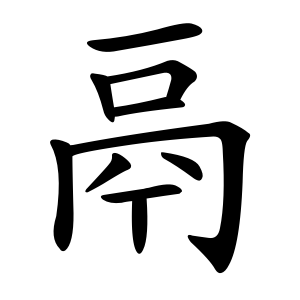鬲
- ancient Chinese cooking vessel;
Etymology
The character 鬲 is a pictograph, modeled after an ancient Chinese cooking vessel known as a tripod cauldron (삼발이 솥), as shown in the image.
It resembles the character 鼎 (jeong – “cauldron”), but 鬲 (ryeok) was created later.
Compared to 鼎, 鬲 has: thinner legs, a hollow interior, and a lighter build, allowing it to hold more food and have a wider area to receive heat, making it more efficient as a cooking vessel.
However, because of these practical characteristics, 鬲 was considered less prestigious or authoritative than 鼎 when used as a ritual vessel.
The form of the character depicts the side view of the vessel, with: a decorative pattern in the center, and three legs, faithfully capturing the visual shape of the object.
Usage in Korean
When used as a semantic component, the 鬲 radical generally conveys meanings related to: cooking vessels, cooking itself, or food and cuisine.
Examples of characters that use 鬲 as a radical include:
鬺 (삶을 상) – to boil,
鬷 (솥 권) – a kind of cauldron,
鬴 (가마솥 부) – large cooking pot.
However, be aware that not all characters containing 鬲 use it as their radical. For example: 隔 (격, "to separate"), though it contains 鬲, is classified under the radical 阝 (left-side "ear"), and 融 (융, "to melt"), is classified under the radical 虫 (insect/bug).
So despite their visual structure, these characters belong to other radicals, not 鬲.
Derived characters
The variant character 䰜, which was treated as a separate radical in the Shuowen Jiezi, was later merged into this category. 䰜 is considered an ancient form of 鬲, and the two 弓 (bow shapes) within it symbolize steam rising from the cauldron.
Although 䰜-derived characters number 33, which is not far behind those derived directly from 鬲, most of them are rare or obscure characters (벽자, 闢字). One of the few exceptions is 鬻, the original form of 죽 죽 (粥), meaning "porridge." Even this character, however, is more often used with the meaning “to sell” (육).
- 一口月中 (MRBL)
- ⿱ 𠮛 ⿵ 冂 ⿱ 䒑 丨 (G H T)
- ⿱ 𠮛 ⿵ 𦉪 丅 (J K)
